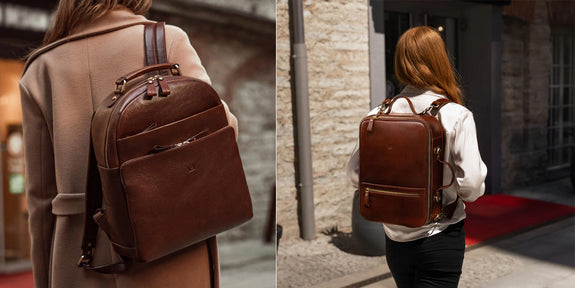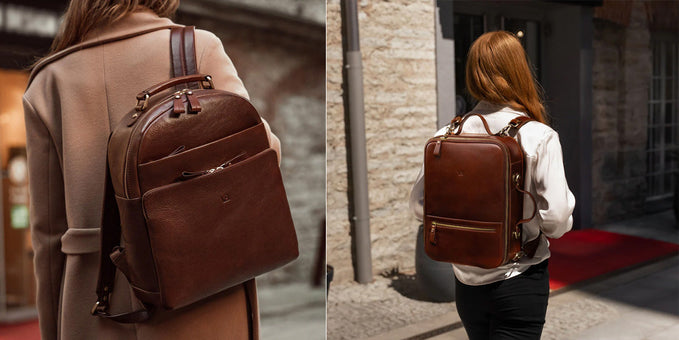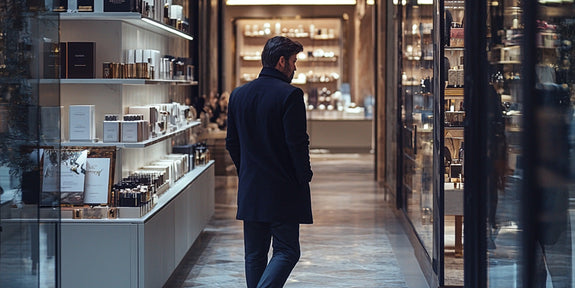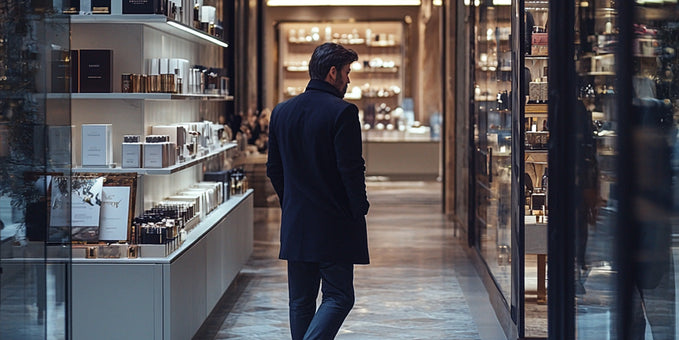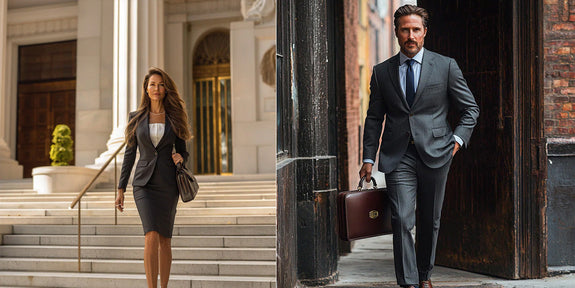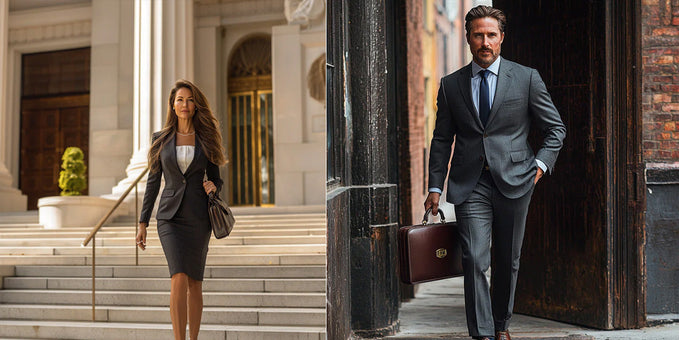What Do Lawyers Wear?

Here's a summary of what the typical lawyer will wear:
Male lawyers:
-
Courtroom: Navy or charcoal two-button suit, white cotton shirt, burgundy or navy silk tie, black cap-toe Oxfords, black leather briefcase. No loafers. No gimmicks.
-
Corporate/Client-Facing: Charcoal or medium grey suit, light blue shirt, textured silk tie, dark brown or black Oxfords, matching leather briefcase. Add a steel watch or white pocket square.
-
Senior/Partner Level: Midnight or charcoal double-breasted suit, structured white shirt, charcoal tie, black whole-cuts, gold or rose gold accents. Quiet luxury.
-
Business Casual: Soft blazer (navy/brown), OCBD shirt, wool trousers or chinos, leather loafers, field watch. No denim, no untucked shirts.
Female lawyers:
-
Courtroom: Dark tailored suit (black/navy/charcoal), crisp blouse (white/light blue), closed-toe pumps, structured leather bag. No loud prints or jangly jewelry.
-
Corporate/In-House: Knee-length wrap dress or high-waisted trousers + blazer, block heels or loafers, sleek tote. Think calm authority.
-
Client/Travel/Conferences: Soft-toned blazer, silk blouse, midi skirt or knit jumpsuit, low heels or mules, minimal gold jewelry. Always polished, never fussy.
The following guide goes into more detail:
Breaking Into Law Is Hard - Here's How To Dress For The Position You Deserve

You’re standing in front of the mirror before your first legal interview, and nothing in your closet looks like it belongs in a courtroom - or anywhere within 500 feet of a hiring partner?
The pants bunch weird at the ankles, the blazer pulls at the shoulders, and you're frantically Googling “business professional vs courtroom attire” like you're cramming for a cold call.
What you want is to walk in with the quiet confidence of someone who knows exactly what they're doing, like Michelle Obama striding into Sidley Austin or Neal Katyal heading into oral arguments at the Supreme Court.
The right outfit doesn’t just meet the dress code - it changes how you carry yourself before you’ve even said a word.
Here's what you need:
Dress Codes Don’t Come With Instructions - Here’s What You Need to Know First

Let’s get one thing out of the way - nobody is born knowing what to wear in a law firm.
You don’t get a magical memo from Harvard or Georgetown on the “correct shade of navy” or whether loafers count as courtroom-friendly footwear (unless you know someone in the profession already).
You're just expected to show up, read the room like a psychic, and not look like you wandered in from a startup accelerator or a casual Friday at Google.
So what does “business professional” actually mean when the stakes are real?
Think NPR host meets top lawyer at a federal courthouse. Structured. Purposeful. Polished, but never flashy.
-
Suit jacket and matching pants or skirt in dark, neutral colors - navy, charcoal, deep olive, or black. If your pinstripe is visible from across the room, it’s too loud. Plaids should whisper, not shout.
-
Fabrics matter. Wool (Super 100s–120s) or heavy blends over 180 gsm give off courtroom gravitas, while shiny, thin synthetics scream “first internship panic buy.” But consider the weather, and ensure you have options for different temperatures.
-
Shirts should feel like confidence in cotton form - no sheer fabrics, no ruffles, no limp collars that collapse under pressure. Soft blue or optic white always wins.
-
Footwear? Closed-toe. Understated. Polished. If Amal Clooney wouldn’t wear it in court, you probably shouldn’t either.
- Bag? Stick to a professional legal briefcase or legal purse in black or brown. You could get away with a deep red, but it's harder to pair with an outfit.
Now let’s get into the landmines.
“Business casual” means radically different things depending on geography (yes, New York is judging your shoes), setting, and whether the office has an espresso bar or a bailiff. That’s the fun part: you’re expected to intuit all of this without ever being told.
Case in point: Picture the boutique litigation firm in Boston, where someone walks in wearing chinos and no socks on a Friday. The managing partner notices. He says nothing. But guess who never gets client-facing assignments ever again?
You’re not just dressing to impress - you’re dressing to decode the culture without looking like you're trying too hard.
→ If you're already sweating over fabric blends and collar structures, good. That means you're paying attention. Let’s build this thing, brick by (well-tailored) brick.
Build a Courtroom-Ready Closet with Just 8 Smart Essentials

Here’s the uncomfortable truth: you don’t need more clothes - you need the right clothes. If your wardrobe is 70% “maybe if I layer this right,” and 30% “why did I buy that,” it’s time for a hard reset.
We’re not aiming for volume here - we’re going for function meets credibility meets adaptability.
Let’s break down each piece with clinical precision (and a little heart):
-
1. Tailored Suit (x1 minimum)
Single-breasted, 2-button, notch lapels (2.5–3.5 inches wide). Wool or wool blend (Super 100s minimum). Off-the-rack is fine - if it fits. No balloon shoulders, no saggy backs. Pant drop? 6–8 inches from jacket size. Hem should land just above the shoe heel (0 - 0.5 inches for a conservative look), ensuring a slight break in front.. Want the professional silhouette? It’s all in the tailoring. $40–$80 in alterations turns average into outstanding. -
2. Crisp Shirts or Blouses (x2–3)
Think: cotton poplin with backbone. Thread count between 80s–100s. The goal? Structure without starchiness. Avoid anything sheer. Try the “sunlight test” - if your outline shows through when you stand by a window, swap it out. -
3. Conservative Professional Dress (x1) (Women)
Structured sheath or A-line. Mid-knee sweet spot = 18–22 inches from the natural waist. Look for fabrics like ponte knit, crepe, or gabardine around 300–400 gsm. And for the love of Ruth Bader Ginsburg, get it lined. -
4. Trousers or Slacks (x1–2)
Mid-rise (9–11”), tapered leg, 14–16" opening. Dark neutrals. Iron the crease. Better yet, have it pressed at the dry cleaner before big days. Pocket buttons? Hard pass - they bulge under jackets like regrettable secrets. -
5. Standalone Blazer (x1)
This is your law wardrobe's Swiss Army Knife. Go tonal: if your pants are charcoal, grab a slate or graphite blazer. Shoulder width should match your natural shoulder (measure from acromion to acromion - yes, that’s a real anatomical term). Armhole height under 9" = more movement, less bulk. -
6. Leather Shoes (x1–2 pairs)
Men: Oxfords or derbies. Women: flats or block heels under 2.5". Look for Goodyear welted soles if you can swing it - they last forever. Bonus: insoles with gel heel cushions make walking 7,000 courthouse steps bearable. -
7. Work Bag or Portfolio
You want: Structure, space, zero jangle. Ideal size? 15" x 11" x 4" minimum. Must hold a legal pad, water bottle, phone charger, and at least three versions of your resume (because printers fail when you need them most). Weight under 2.5 lbs = your shoulder won’t give out before lunch. Our top luxury picks if you have some graduation money to spend: Elegance for Women, No.1 for Men. -
8. Neutral Outerwear
Peacoat. Wool trench. Anything over 60% wool. Length: 37–42 inches. Needs to cover your blazer. Bonus points if it has an interior pocket for lip balm or a granola bar you can eat between docket calls.
Quick story: Your classmate wears an unlined suit on the rainiest day of your externship year. By 10am, her hems look like wilted lettuce. Meanwhile, your half-lined wool blend (340 gsm, thank you very much) holds shape like it was testifying in front of Congress. Dry. Structured. Unbothered.
When the fabric supports you, everything else does too.
(We have a more detailed article on the best bags for female lawyers here)
→ Now that we’ve got your toolbox, let’s look at how each legal setting calls for a different kind of gear.
Why What Works at a Law Firm Can Look Off in Court

Think of each legal setting as a stage - and your clothes are the lighting. Same actor, wildly different effect depending on where you stand.
Courtrooms vs. offices vs. interviews = radically different performance zones. That means: same wardrobe, but adjusted lighting cues.
-
Job Interviews
Go full armor. Suit, pressed shirt, closed-lip smile. If you're wondering whether your watch is too flashy, it probably is. -
Courtrooms
It’s not just about being respectful - it’s about signaling respect. Judges notice. Clerks take mental notes. Flashy lining? Distracting. Earrings longer than 1.5"? Visually noisy. Court is not a place for personality peacocking - it’s a place for competence. -
Moot Court or Law School Competitions
You are literally being judged. Don’t let wrinkled sleeves be what they remember. Practice gesturing in your jacket. Try this test: Raise both arms like you’re objecting to hearsay. If the fabric pulls, it’s too tight. -
Public Interest or Gov Orgs
Culture here runs lean and pragmatic. That doesn’t mean underdressing - it means dressing smart. Knit blazers and polished loafers strike the right balance. Think more “Rachel Maddow on MSNBC” and less “Silicon Valley founder on laundry day.” -
BigLaw or In-House
Here’s where things get subtle. Suiting brands are status markers. You don’t need to match the partners, but you need to show fluency. Think: Theory, SuitSupply, Hugo Boss. If you’re wearing something from Amazon Essentials, make sure it doesn’t look like it.
Even if all you have is one good suit that you have to Febreze daily while rotating three ties - if it fits you like it was made by the best, no wrinkles, no sagging, no second-guessing - you'll exude readiness, and get that offer.
Where you wear the suit changes how the suit works.
How to Look Like Yourself Without Breaking the Dress Code

There's nuance here: you don’t want to erase your personality to fit in, but you also don’t want your style choices to raise questions about your professionalism.
Subtle personalization strategies:
-
Men: Try a textured knit tie (2.25-2.75” width), muted pocket square (12"x12"), or watch with a leather band (case diameter 38-42mm). Avoid novelty prints. Clean-shaven or close-trimmed beards (no longer than 0.5") signal effort.
-
Women: Soft color palettes (like blush, rust, or deep teal) work beautifully on blouses under black suits. Loafers with gold buckles, or shell earrings (under 1 inch diameter), add polish without flash.
-
Gender-neutral: Opt for structured cuts and darker neutrals like graphite or espresso brown. Chelsea boots or lace-ups with a 10-12 mm heel work well across genders.
The goal is silent strength - leave an impression of confidence, not color-blocking.
Good luck.
We have more detailed guides on outfits for lawyers below:

Author: Igor Monte
Igor Monte is the co-founder of Von Baer. He's an expert in all things premium leather, from being an end-user right up to the design and manufacturing process. His inside knowledge will help you choose the best leather product for you.
We strive for the highest editorial standards, and to only publish accurate information on our website.
Leave a Comment
Your email address will not be published.

